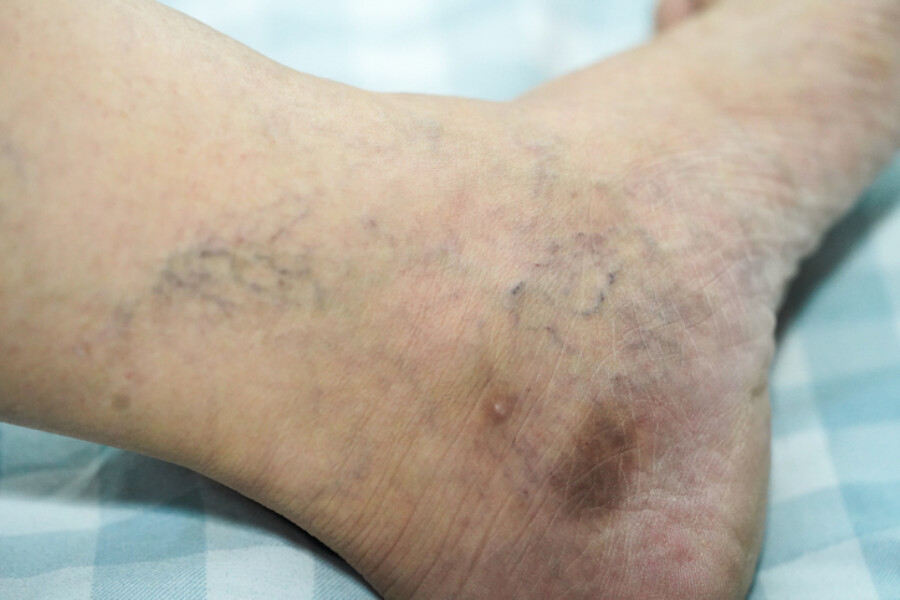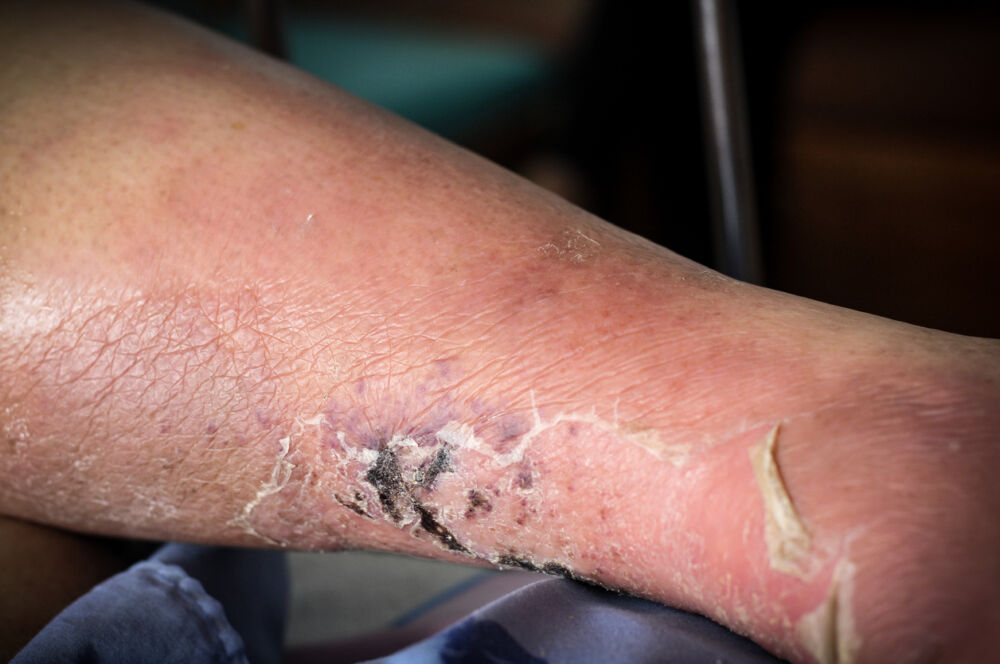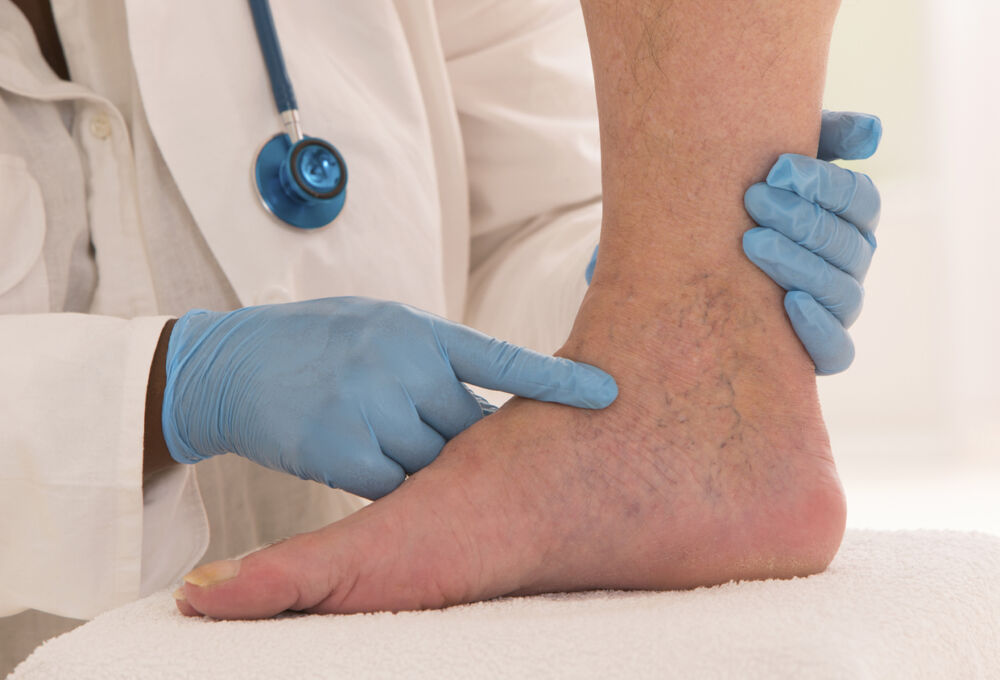What are those Brown Spots on My Legs?

There are a number of different symptoms that can appear with venous disorders, but few are as distressing as the brown discoloration that often appears on the lower leg. In addition to its unsightly appearance, this symptom can also be an indication the underlying disorder is worsening. For that reason, it is important to understand why the discoloration appears and what steps you should take to have the condition further assessed and treated.
What is venous stasis dermatitis?
Brown discoloration that forms on the lower part of the leg, usually around the ankle, can be attributed to a skin condition known as venous stasis dermatitis. This inflammatory skin disorder is actually caused by problems with the veins underneath the skin’s surface. When the veins don’t work properly, blood and fluids can leak out of the veins and cause skin discoloration.
Venous stasis dermatitis often begins with minor irritation and itchiness of the skin in the affected area. Over time, the skin will start to thin and look more translucent. If the problem is not addressed at this point, the skin can become discolored and take on a thick, leathery texture. Unfortunately, these final symptoms are often permanent, even if the underlying vein disorder is properly treated.
The Vein Problem
The vein disorder that leads to this skin condition is chronic venous insufficiency or CVI. The veins are responsible for carrying blood back to the heart – a particularly tough job for veins in the lower legs that must push blood back up the legs to the chest. Over time, these lower legs veins can become damaged, which allows blood to reflux back into the vessel. The pooling blood leads to weakening of the vessel and sometimes the appearance of a visible varicose vein.
CVI can worsen if left unchecked. The additional pressure in the veins can lead to leaking of fluid and blood outside the vessel, which is what then causes the skin discoloration in many cases. Further complications can also arise.
Potential Complications
Venous stasis dermatitis leaves the affected skin even more vulnerable to injury. Even the slightest nick or cut can develop into a very large, open sore known as a venous ulcer. Venous ulcers typically form around the ankle, along the calf, and less often in the thigh, and they can be very difficult to treat. These wounds are prone to infection. Even when it appears they have fully healed, they often return in the same area when therapeutic efforts are discontinued.
Treating the Condition, Not the Symptoms
Unfortunately, patients that do not go to a vein specialist for their skin condition may not receive the correct diagnosis. Many times dermatologists and primary care physicians do not recognize CVI, so they diagnose inaccurately. These patients may then spend months and even years trying treatments that will not address the underlying problem, all the while the condition continues to worsen. Physicians that do not specialize in vein disorders can mistakenly diagnose this problem as cellulitis, a bacterial skin infection that requires completely different treatment than venous stasis dermatitis. A vein specialist will have the expertise and equipment to examine the veins underneath the skin’s surface to determine if a blood flow problem is causing the skin changes.
When venous stasis dermatitis is diagnosed, the treatment is focused on addressing the diseased vessels and restoring healthy blood flow. This can be done through a variety of minimally-invasive procedures that collapse the affected vein so that it can be reabsorbed by the body. With the vein eliminated, blood naturally reroutes to healthier vessels nearby.
If you have discoloration around the lower part of the leg, make an appointment with a vein specialist to get an accurate diagnosis and treatment option. This is particularly true if your discoloration is accompanied by symptoms like leg pain and heaviness or swelling of the lower extremity. The sooner you treat the vein condition, the fewer complications you will experience. To learn more, contact Center for Vein Restoration today.

